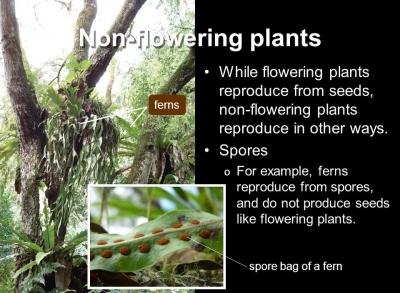
Flowers make plants more beautiful. However, not all plants have flowers. Some plants reproduce either by spore or seeds. Non-flowering spore-producing plants are classified into seven groups.They are liverworts, hornworts, mosses, whisk ferns, club mosses, horsetails and ferns.
There are about 8000 species of liverworts, and they are found world-wide. They are the simplest plants and have no true roots; stems and leaves.They grow in damp areas and reproduce by scattering spores. Hornworts grow in damp places. These simple plants get their name from their horn-like spore bearing structures.
Nearly 10,000 species of mosses can be found in the world. They grow in damp woodlands and have a cushion-like shape.
Whisk ferns are simple vascular plants that may grow on other plants. Their spore producing stage has a whisk-like shape, with branches.
Club mosses are low-growing plants that have true roots. They usually grow on forest floors. Horsetails are brush like plants with cylindrical stems, narrow leaves and separate spore producing stems.
Ferns are plants with well-developed roots, stems and leaves. The largest group of non-flowering plants, ferns usually grows on ground, but some species grow on other plants.
Picture Credit : Google



